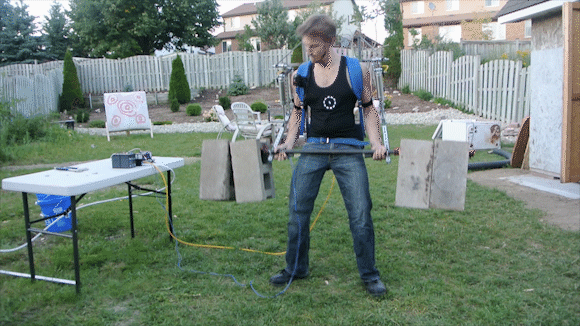We’re not just a bunch of monkeys with typewriters here at Hackaday; we don our hacker hat whenever our schedules allow. Or, in the case of Hackaday’s own [James Hobson]—aka [The Hacksmith]—he dons this slick exoskeleton prototype instead,turning himself into a superhero. Inspired by the exoskeleton from the film Elysium, this project puts [James] one step closer to the greater goal of creating an Iron Man-style suit.
For now, though, the exoskeleton is impressive enough on its own. The build is a combination of custom-cut perforated steel tubing and pneumatic cylinders, attached to a back braces of sorts. In the demonstration video, [James] stares down 170 pounds of cinder block affixed to a barbell, and although he’s no lightweight, you can tell immediately from his reaction how much assistance the exoskeleton provides as [James] curls the makeshift weights over and over. And that’s only at half pressure. [James] thinks he could break the 300 pound mark of lifting if he didn’t break his legs first.
There’s plenty of behind-the-scenes footage of the build process to be had, so make sure you stick around after the jump for a sizable helping of videos, and check out [The Hacksmith’s] website for more of his projects.
Continue reading “Homemade Superhero: [James’] DIY Exoskeleton”










